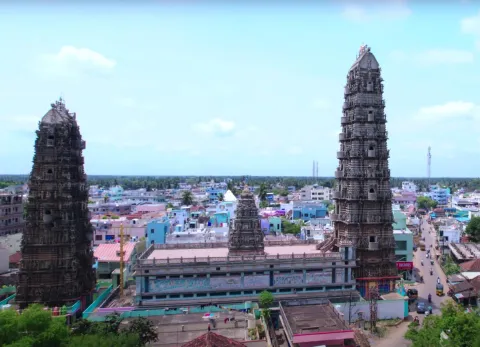
NATURAL VEGETATION OF INDIA
Natural Vegetation refers to the plant cover that has not been disturbed over a long time,
Natural Vegetation refers to the plant cover that has not been disturbed over a long time, so as to allow its individual species to adjust themselves fully to the climate and soil conditions.
v Thus, grasses, shrubs and trees, which grow on their own without any interference, constitute the natural vegetation of an area. However, there is a difference between flora, vegetation and forest.
v Flora refers to plants of a particular region or period, listed as species and considered as a group.
v Vegetation, on the other hand, refers to the assemblage of plant species living in association with each other in a given environmental set-up. For example, the redwood forests, coastal mangroves, roadside weed patches, cultivated gardens and lawns, etc., all are encompassed by the term vegetation.
v The major vegetation types of the world are grouped as forests, grasslands, scrubs and tundra.
v Finally, the word 'forest' refers to a large tract of land covered by trees and shrubs.
TYPES OF VEGETATION
India has a variety of forests and natural vegetation which varies from region to region due to the variations in climatic conditions, soil types and relief features.
v The Western Ghats and the Andaman Nicobar Islands are marked with tropical rain forests; the Himalayas have temperate vegetation; the desert and semi-desert regions of Rajasthan have a wide variety of bushes and thorny vegetation; and the Delta regions have tropical forests and mangroves.
The country can be divided into five major vegetation regions which are:
1. Tropical Evergreen Forests
2. Tropical Deciduous Forests
3. Tropical Desert Forests
4. Littoral Forests and
5. Mountain Forests
TROPICAL EVERGREEN FORESTS
(a) Climatic Conditions: These forests are found in the areas where the quantumamount of annual rainfall is more than 250 cm.
(b) Distribution: These forests are chiefly distributed in the western slopes of the Western Ghats, hills of North-Eastern region and the Andaman and Nicobar Islands.
(c) Characteristic Features: These forests are dense, multi-layered and have many types of trees and shrubs. In these forests, trees reach great heights of more 45 m or above.
v The carpet layer of herbs and grasses cannot grow because of the dense canopy of trees which do not allow enough sun light to reach the ground.
TROPICAL DECIDUOUS FORESTS
These forests are also known as the monsoon forests. They are the most widespread forests in India, Based on the availability of water, these forests are further categorised into two types:
(i) The moist deciduous forests and
(ii) The dry deciduous forests.
The Moist Deciduous Forests
(a) Climate Conditions: Such forests are found in areas with moderate or low annual rainfall of 100 cm to 200 cm and humidity percentage of 60 to 80.
(b) Distribution: These forests occur in the North-Eastern States along the foothills of Himalayas eastern slopes of the Western Ghats and Orissa. They occupy a bigger area than the evergreen forests.
(c) Characteristic Features: The trees in these forests shed their leaves from six to eight weeks during spring and early summer when the storage of water is acute. Further, the sub-soil water is not enough for the trees to keep their leaves all the year around.
Dry Deciduous Forests
(a) Climatic Conditions: These forests are found in areas having an annual rainfall between 70 cm to 100 cm and humidity between 51 to 58 per cent.
(b) Distribution: These forests are found over a wide area, especially in an irregular strip running north-south from the foothills of the Himalayas to Kanyakumari. They occupy a sizeable area in Uttar Pradesh, Maharashtra, Karnataka and Tamil Nadu.
(c) Characteristic Features: These forests thrive between moist deciduous (in the East) and tropical thorn forests (in the West). On the wetter margins, these forests have a transition into moist deciduous, while on the drier margins they degrade into thorn forests
TROPICAL DESERT FORESTS
These are known as Tropical Thorn Forests.
(a) Climatic Conditions: These forests are found in the areas which receive annual rainfall less than 50cms and humidity below 47 per cent.
(b) Distribution: These forests are chiefly distributed in South-Western Punjab, Haryana, Uttar Pradesh, Central and Eastern Rajasthan, Madhya Pradesh and Gujarat.
(c) Characteristic Features: Due to paucity of rainfall, the trees are stunted with large patches of coarse grasses. In these forests, plants remain leafless for most part of the year and look like scrub vegetation.
N.D.Nagesh
Sr. Faculty,
Ganesh IAS Academy, Chennai.














